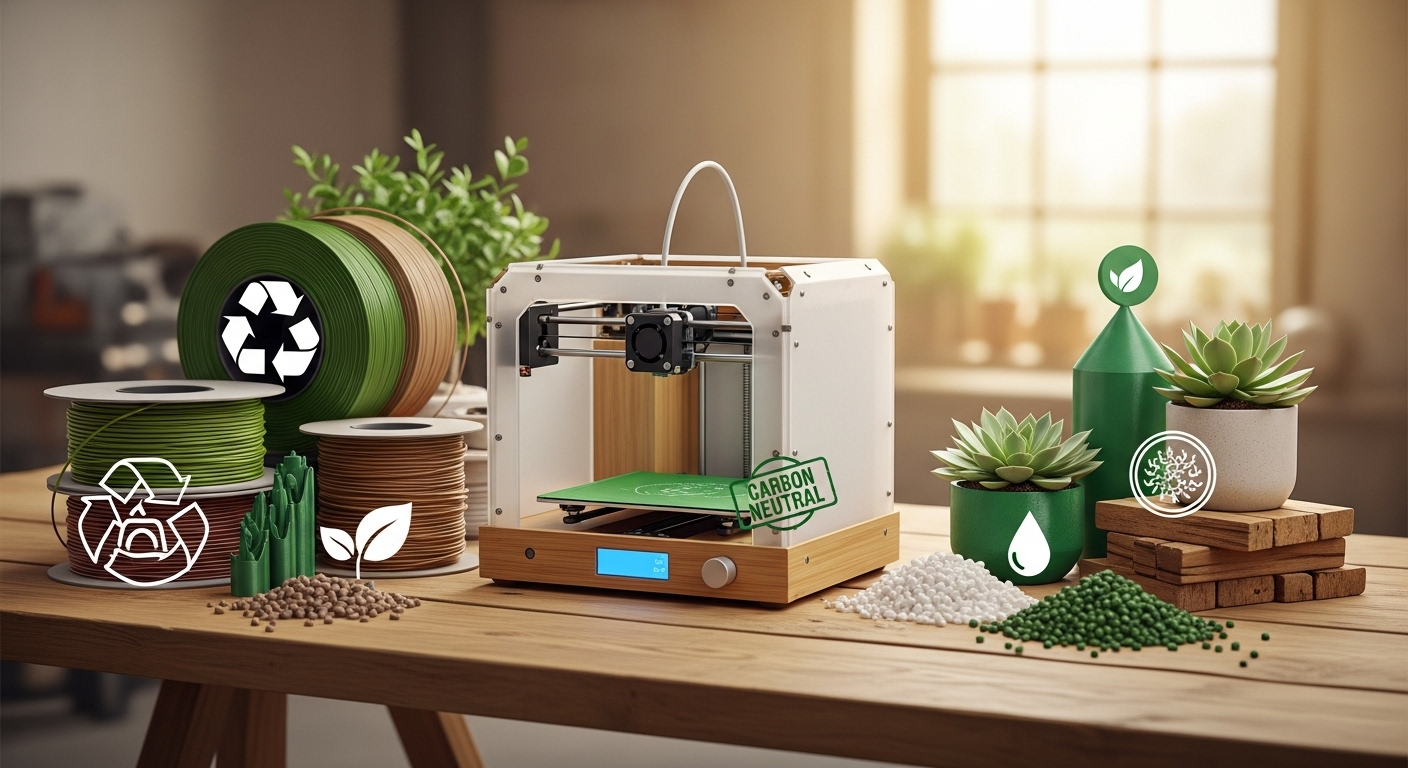Introduction
As environmental concerns shape global manufacturing, 3D printing is increasingly being seen not just as a cutting-edge tool—but also as a more sustainable alternative to traditional production. In 2025, eco-conscious creators and companies are using 3D printing to minimize waste, reduce carbon footprints, and explore innovative materials that align with circular economy goals.
Why 3D Printing Has a Sustainability Advantage
Traditional manufacturing often relies on subtractive processes (like milling or cutting), which waste material and require heavy tooling. 3D printing flips that model—it’s additive, using only the material needed to build the part.
Key Sustainable Benefits:
- ♻️ Less Waste: Additive manufacturing produces minimal scrap.
- 🌍 Localized Production: Reduce transport emissions by producing closer to end users.
- ⚡ Energy Efficiency: Many modern printers use less power than heavy industrial equipment.
- 🔁 Reusability: Scraps and misprints from some materials can be recycled into new filament.
Top Sustainable 3D Printing Materials in 2025
1. PLA (Polylactic Acid)
- Derived from corn starch or sugarcane
- Biodegradable under industrial conditions
- Ideal for packaging, prototypes, and consumer goods
2. Recycled PETG
- Made from recycled water bottles and industrial waste
- Strong, versatile, and transparent
- Used in mechanical parts and enclosures
3. Bio-Based Nylons and Resins
- Partially made from renewable sources like castor oil
- Lower carbon footprint compared to fossil-based plastics
4. Wood-Filled Filaments
- Blend of recycled wood fibers and PLA
- Gives products a natural finish and reduces plastic use
5. Algae-Based and Mycelium Composites
- Emerging biopolymers that support carbon-neutral and even carbon-negative goals
Eco-Friendly Practices Beyond Materials
✅ Smart Design Optimization
- Lightweight structures like lattices reduce material without sacrificing strength
- Software like generative design tools helps minimize resource use
✅ Printer Settings Matter
- Energy use can be lowered by optimizing layer height, temperature, and infill density
- Choosing slower, cooler prints may save significant power
✅ Recyclability and Reuse
- Leftover PLA or failed prints can be ground and re-extruded into fresh filament using desktop recyclers
- Some print farms now operate closed-loop systems
✅ Packaging and Logistics
- Switching to digital inventory and printing parts only when needed drastically cuts warehousing needs and reduces overproduction
Limitations and Challenges
- Recyclability Isn’t Universal: Not all filaments can be recycled easily or safely.
- Compostable ≠ Compost-Anywhere: Biodegradable materials still require industrial composting facilities.
- Sourcing Materials Responsibly: “Green” filaments still need ethical sourcing and transparency in the supply chain.
Conclusion
As the demand for environmentally responsible manufacturing grows, 3D printing continues to offer promising pathways toward greener production. Its ability to combine lean design, local fabrication, and low-waste processes makes it a valuable tool in the sustainability toolbox.
At PrintVision3D, we welcome opportunities to collaborate on projects that prioritize eco-conscious practices—whether through sustainable materials, efficient production workflows, or low-waste prototyping strategies.


